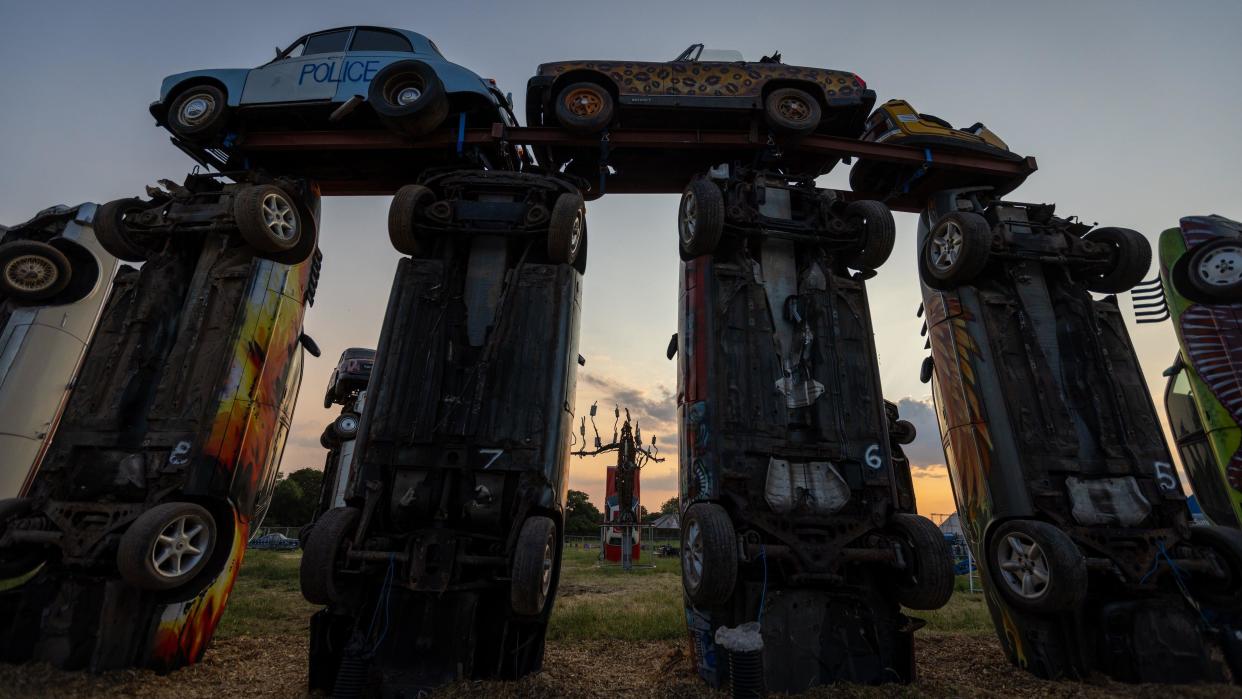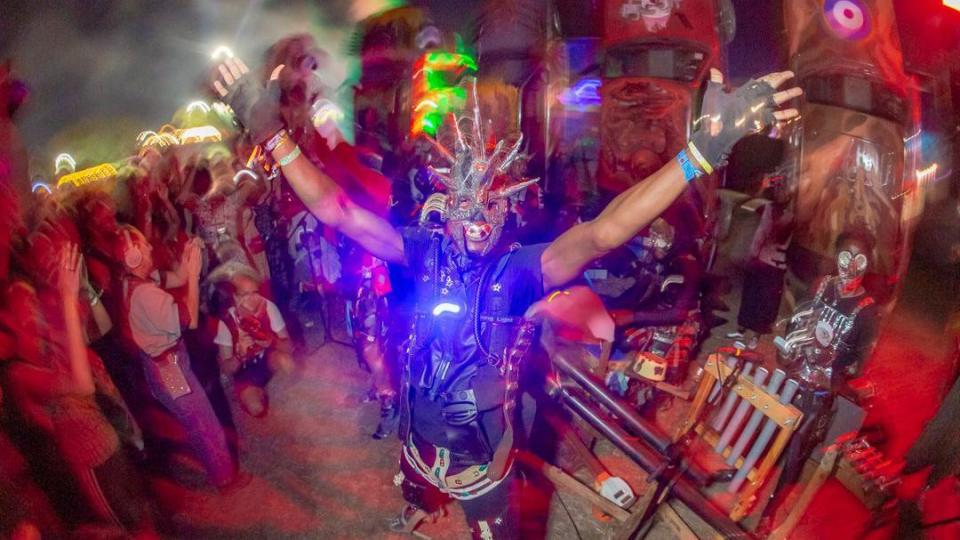Carhenge's little-known link to 1980s incident

Thousands of festival-goers in 2023 enjoyed the return of Glastonbury's Carhenge - a replica of Stonehenge built with 24 vintage vehicles.
But despite its eye-catching design and obvious nod to one of the UK's most sacred sites, most people do not know the sculpture is linked to a key 1980s incident.
It first appeared at the festival in 1987 and has been brought back by its creator - underground artist Joe Rush, now 63, from London.
"Each of the cars have been dedicated to characters whose life's work has contributed to the underground culture, which is now our culture," Mr Rush told the BBC.

Built as an homage to counterculture heroes such as Vivienne Westwood and Fela Kuti, work on installing the massive structure for this year's event has been in process since late March.
The sculpture made its first return to the festival since 1987 last year - three decades after it was created in direct response to the Battle of the Beanfield in 1985.
This saw hundreds of new age travellers being prevented from attending the Stonehenge Free Festival during the summer solstice by police.
Many people were injured, with 12 taken to hospital, and police made more than 400 arrests.
"That basically put an end to the Stonehenge Free Festival and two years later that whole travelling scene was still in chaos," said Mr Rush.
"We thought, if we can't go to Stonehenge, we can build Stonehenge out of our cars, and we can have our party there. We don't have to fight over a bit of land and some old stones, and that still holds true.
"It's the people that make the party, and if the people are there the party can be anywhere."
Carhenge was Mr Rush's first work at Glastonbury, but his Mutoid Waste Company has gone on to create some of the festival's most iconic installations including the Glastonbury-on-Sea pier and a giant mechanical phoenix that hung over the Pyramid Stage as the Rolling Stones headlined in 2013.
Even though the festival has changed a lot in the past 40 years, "not as wild as it once was", Mr Rush maintains that the core ethos of the festival remains as true as it did decades ago.
"Even though it's been through so many evolutions over the years, it still has a basic root integrity of thinking about people and planetary wellbeing.
"The fundamentals of the festival, which are creative energy and conservation and all these other issues it's championed over the years, are still very much alive and genuine."

This year the installation will come alive by night with the sounds of Congolese outfit Fulu Miziki or “music from the garbage” in Lingala, as well performances by percussionist Jo Bucket echoing all-night drumming sessions held at Carhenge in 1987.
At other times of day the installation will be surrounded by "pockets of sound" related to the heroes featured on each pillar.
"I absolutely love it, I built it and it is my favourite place in the festival," said Mr Rush.
"You have to observe how people use it, how people react with it and how people engage with it as an area and as a sculpture.
This year will be another opportunity to learn, Mr Rush explained, adding that "by the end of year three" he hoped he'd "have something that has its integrity".
That being said, he joked: "If you can get the thing up in year one, you've done well."
Follow BBC Somerset on Facebook and X. Send your story ideas to us on email or via WhatsApp on 0800 313 4630.


